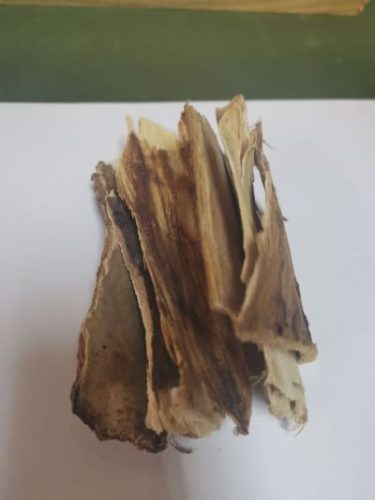Buscador
La saponina es un compuesto químico que se encuentra en la corteza del Quillay, que es utilizado ampliamente en la industria de la cosmetología y la cerveza por su capacidad para producir espuma. Esta vez, en el contexto de la pandemia, el componente está adquiriendo un protagonismo particular ante la capacidad que demostraría de estimular el sistema inmune para generar buena respuesta frente a una vacuna.
Professor René Carmona, university professor of the Department of Forest Product Development of the University of Chile, explained that saponin has many programs “it is basically a commercial and cosmetic product. It has demonstrated its qualities as a foaming agent and herbaceous emulsifier, which allows it to be used in programs such as: foaming beverages and beers; dental products, shampoo, liquid soap and cosmetics, paper industry, fire extinguishers. As an emulsifier of fats and oils, as a protector of colloidal substances. “
Pero el académico indica que la saponina también es utilizada “en medicina, en enfermedades respiratorias y de la piel, y adyuvante de vacunas animales y humanas. En agricultura como agente humectante y biopesticidas en el control de nemátodos y hongos fitopatógenos. Además de usos en la industria del vidrio y pulido de metales”. Agrega, en este sentido, que al ser un producto natural la saponina tiene la cualidad de presentar una mejor recepción en el cuerpo humano, razón por la que figura como un adyuvante clave para la formulación de una vacuna contra el Sars-Cov-2.
Pero no es primera vez que se utiliza este componente en la fabricación de vacunas. El profesor Carmona señaló que “se usa en la vacuna de la fiebre aftosa y se probó en el desarrollo de vacunas contra el SIDA, además es un producto aceptado por la FDA (Agencia de Administración de Medicamentos y Alimentos) de los Estados Unidos para el consumo humano en alimentos y bebidas bajo el código 21 CFR 172.510, y también por la Unión Europea en bebidas no alcohólicas”.
Quillay, a species endemic to central Chile, is the main source of this compound. In the bark, as well as in the wood of barrels and oars, you can find saponin. “The extraction procedure is simple. To make it less difficult to obtain, the bark should be chopped and the wood chipped. It is placed in a container containing hot water for several hours. The extract is then separated from the chips and focused on what comes next,” he explains.
Mientras exista Quillay podremos contar con este valioso producto no maderero. Sin embargo, el cambio climático, los incendios forestales y la mega sequía que afecta nuestro país hace varios años se han constituido como la principal amenaza que afecta la población de individuos del bosque esclerófilo.
With its 15 meters of height forward and the trunk of up to one meter in diameter, this tree of foliage is green and the white flowers are discovered between the regions of Coquimbo and Bio-Bío, a domain where some other species for life are discovered. Basically, groves are combined with stories of species such as Litre, Peumo, Maitén, Boldo and others. You can also find pure but open forests, forming a park-type forest,” says Professor Gustavo Cruz, a professor in the Department of Forestry. and Nature Conservation at the University of Chile.
The Quillay has shown a kind of ability to adapt to other types of weather and climate, and to resist the humidity that has generated the relief of precipitation in the central domain of our country. “The distribution of the species is subject to varied climatic conditions. It adapts to dry and humid climates, but it is also found in cool and humid places, with the presence of snow and ice,” explained Professor Cruz. The Quillay adapts to degraded, dry and hot soils, and with endurance, however, its greatest choice is to reach deep, flat sands, which means that it can reach 30 meters in height and 1. 5 meters in diameter at its height. trunk.
In addition to its richness and the products derived from its high concentration of saponin, Professor Cruz stated that “it is also one of the species with the greatest beekeeping prospects from the sclerophyllous forest of central Chile, due to its abundance and its opportunity for flowering. ” for food of beekeepers and the characteristics of the honey received from it. ”
The Quillay is configured as an endemic forest species of our country with wonderful attributes that can give a wonderful surprise if tested with the COVID-19 vaccine formula with saponin as an adjuvant.

